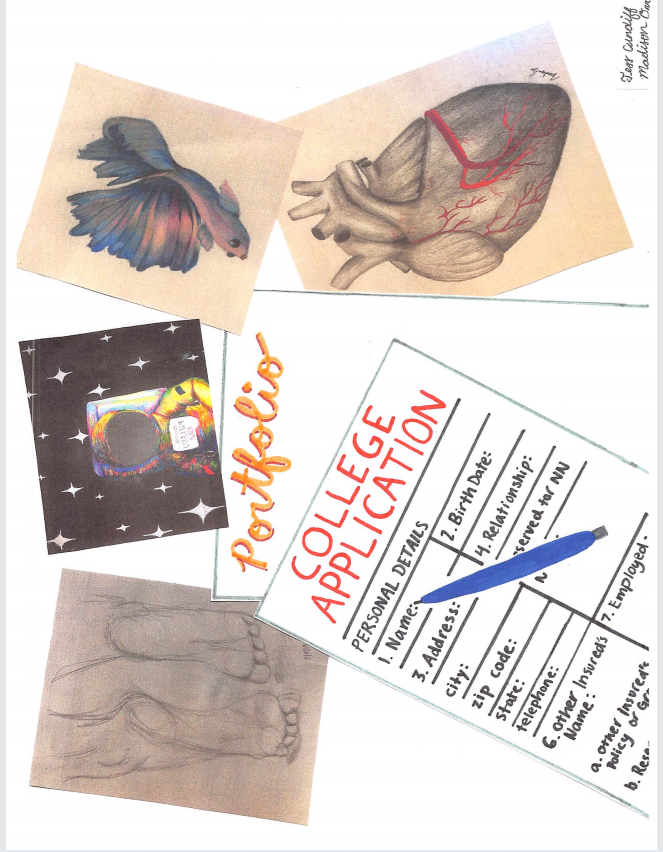While there are some application process similarities all colleges share, there are many components that are unique to an art school application. The form of art that a student chooses to apply for can also dictate differences in the application process.
Like most schools, many art colleges accept the Common Application essay, a universal 650-word (or less) essay, the subject of which is up to the applicant. For example, Chloe Abidi, a Ridgewood High School senior applying to schools to study photography, wrote her Common Application essay about being legally blind without correction and how that juxtaposes her interest in the visual arts. Another similarity with both arts and academic schools are supplemental essays, a prompt given by individual schools, usually 200-600 words, about the school or the applicant’s interests. While every school accepts either the Common Application or supplemental essays, some schools accept both.
Depending on the art form a student chooses to apply for, there are different “steps” in the process. For example, visual art applicants must submit a portfolio of their work, usually with individualized requirements for different schools. Chloe describes “the rigor of the actual portfolio” as “the most intense part” of her application because of the sheer number of pieces (about 20 per school) and the descriptions she has to write for each piece about her process and the piece itself. Grace Cowie, a senior applying for fashion design, says she “didn’t expect how different the portfolios are” because some schools give specific assignments and others are vague.
Students applying for music or theater programs must submit prescreens, which are videos of themselves performing (singing a song, giving a monologue, etc.) as well as an interview video. Prescreens are essentially the first “stage” of the application for these students, as the schools watch prescreens before looking at anything else about the student, and if a student doesn’t pass prescreens they don’t go any further with their application for that school. If they pass, however, they move on to formal auditions.
One component of prescreens unique to theater programs is the “wild card.” This is an additional 60-second video of the student doing conceivably anything that represents them. Usually students showcase a talent that is unrelated to their major or that the school would likely not otherwise know of, such as juggling or playing an instrument. The wild card is an opportunity for the school to get to know the student more personally. This year, RHS student wildcards range from Abbie Anderson’s broadway cosplay to Sophie Nolan’s spoof on Vogue’s 73 Questions.
Many RHS arts students are applying to both art and non-art programs. For example, Lauren McCandless is applying to some schools for music, but is also applying for communications. For some of her music schools, she has decided to get a leg up by taking lessons with the voice teachers at the schools so she can learn their expectations and they can become familiar with her voice in preparation for her formal audition.
“It’s very hard to gauge,” Lauren says. “There’s really no way of knowing if you’re going to get in or not. It’s really just based on what they think of you.”
For any student, college applications are rigorous and involve a lot of waiting and a lot of stress. Even though the process can be much longer for art students, Abbie Anderson has chosen to keep a positive outlook.
“Although I 100% can’t control the outcome of applying to college,” she notes. “I can control my preparation and-to an extent-how well I do.”
Sophie Hartstein
Staff Writer
Graphic: Tess Cundiff & Maddie Orr

